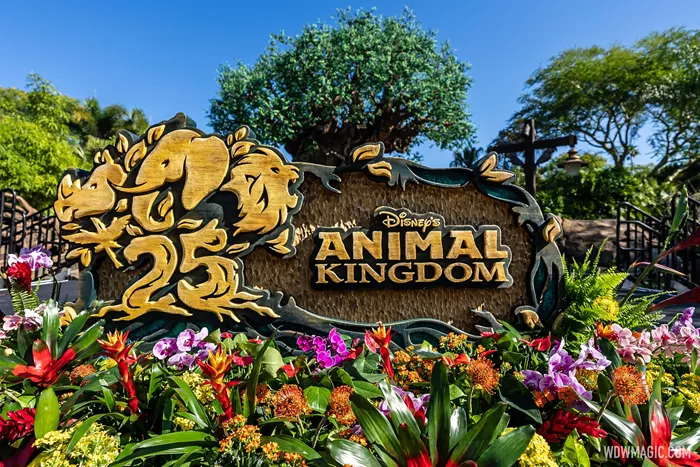Disney’s Animal Kingdom stands as one of the premier theme parks within the Walt Disney World Resort in Orlando, Florida. Since its opening on April 22, 1998, this park has captivated visitors with its unique blend of adventure, conservation, and entertainment. Known for its immersive attractions like Pandora – The World of Avatar, Expedition Everest, and Kilimanjaro Safaris, Animal Kingdom offers a rich tapestry of experiences centered around wildlife and natural wonders.
Introduction to Disney’s Animal Kingdom
Disney’s Animal Kingdom differs significantly from other Disney theme parks due to its focus on the natural world and conservation efforts. Designed to resemble a traditional zoo blended with the magic of Disney storytelling, it features themed lands such as Discovery Island, Asia, Africa, and the recently added Pandora – The World of Avatar. Each land is meticulously crafted to immerse visitors in different ecosystems and cultures, enhancing both educational and entertainment value.
Understanding Crowd Dynamics
Historical Trends and Seasonal Variations
Analyzing crowd patterns at Disney’s Animal Kingdom requires consideration of historical trends and seasonal variations. Initially, the park attracted large crowds during weekends and major holidays, mirroring patterns observed in other Disney parks worldwide.
Modern Insights and Data Analysis
In recent years, advancements in data analytics and crowd monitoring have provided deeper insights into visitor trends. Websites like Touring Plans and Undercover Tourist utilize historical data and real-time analytics to forecast crowd levels at Disney parks, including Animal Kingdom. These insights help visitors plan their trips to avoid peak crowds and maximize their enjoyment.
Factors Influencing Crowd Levels
Day of the Week Analysis
Determining the least crowded days at Disney’s Animal Kingdom involves analyzing visitor data across different days of the week. Generally, weekdays tend to be less crowded compared to weekends due to fewer local visitors and reduced travel schedules.
Monday: Often sees lower crowds as visitors are either departing from the weekend or planning their week ahead. It can be a good day for those looking to avoid weekend rush.
Tuesday and Wednesday: Historically known as the least crowded days at Disney parks, including Animal Kingdom. These mid-week days are ideal for visitors seeking a quieter experience.
Thursday: Slightly busier than Tuesday and Wednesday but still quieter compared to Fridays and weekends.
Friday: Starts seeing an increase in crowds as locals and weekend travelers begin arriving.
Saturday and Sunday: Typically the busiest days at Animal Kingdom, with Saturdays often being the peak day due to full-weekend visits and local family outings.
See also: What Is The Best Day Of The Week?
Seasonal Considerations
In addition to weekdays versus weekends, seasonal factors play a crucial role in crowd levels at Disney’s Animal Kingdom:
Peak Seasons: School holidays, summer vacations, and major holidays (such as Christmas and Easter) attract larger crowds. These periods often coincide with extended operating hours and special events.
Off-Peak Seasons: Typically fall and early spring (excluding spring break periods) are considered off-peak times. Weather conditions in Florida, such as high temperatures and humidity during summer, also influence visitor numbers.
Special Events and New Attractions
The introduction of new attractions and special events can significantly impact crowd levels at Animal Kingdom. For instance, the opening of Pandora – The World of Avatar in 2017 drew substantial crowds seeking to experience the innovative rides and immersive environment inspired by James Cameron’s film.
Data-Driven Insights
Analytical Tools and Techniques
Several methodologies are employed to predict crowd levels at Disney’s Animal Kingdom:
Historical Data Analysis: Examining visitor patterns from previous years to identify trends and predict future crowd behavior.
Real-Time Monitoring: Utilizing live data feeds and crowd-tracking technologies to adjust forecasts based on current park conditions.
Statistical Models: Employing algorithms to calculate probabilities and scenarios for crowd size based on various inputs such as weather forecasts, local events, and promotional activities.
Planning Your Visit
Strategies for Maximizing Enjoyment
Based on historical and analytical insights, here are practical strategies for planning a visit to Disney’s Animal Kingdom:
Choose Off-Peak Days: Opt for Tuesday or Wednesday for the least crowded experience.
Early Entry or Late Departure: Arriving at park opening or staying until closing hours can provide quieter periods for popular attractions.
Utilize FastPass+ and Mobile Apps: Disney’s FastPass+ system allows visitors to reserve access to select attractions, reducing wait times. Mobile apps provide real-time updates on ride wait times and park capacity.
Consider Seasonal Variations: Avoid peak seasons if possible, aiming for early spring or fall visits for milder weather and fewer crowds.
Monitor Special Events: Be aware of upcoming events or attraction openings that may impact crowd levels and plan accordingly.
Conclusion
Understanding the dynamics of crowd levels at Disney’s Animal Kingdom involves a blend of historical analysis, modern data insights, and strategic planning. By choosing the right day of the week and leveraging available tools, visitors can optimize their experience and enjoy the park’s attractions with reduced wait times and congestion. Whether exploring the vibrant landscapes of Pandora or embarking on a safari adventure, thoughtful planning ensures a memorable and enjoyable visit to this unique Disney theme park.
Future Trends and Innovations
As technology continues to evolve, so too will methods for predicting and managing crowd levels at theme parks like Disney’s Animal Kingdom. Innovations in artificial intelligence, big data analytics, and guest experience management will play pivotal roles in enhancing visitor satisfaction and operational efficiency. By staying informed and adaptable, Disney and other theme park operators can continue to deliver magical experiences while managing crowd dynamics effectively.

